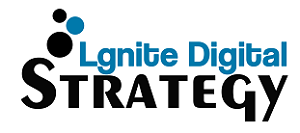While all businesses are predicated on continual growth, SaaS companies, in particular need to be constantly growing and evolving to survive. Unlike many other types of businesses, SaaS companies use a ‘living service’ model to continually update their software offerings for an audience that is subscribing on a monthly or annual basis to license their software. Once a company or individual ends their subscription with a SaaS company, they then stop paying for the SaaS company’s continual development of the software. As a result, SaaS companies need to have a constant new cohort of customers that are waiting in the wings and ready to sign up for a subscription to their software.
While you can run paid ads to do this, the ROI on these tend to be low. If you are spending $30 to acquire a new customer through paid ads, for example, and a user only subscribe to use your software for one month, or even just a free trial, then the cost of acquisition there is too high. While paid ads can generate leads quickly, it may not be sustainable for a fledgling SaaS business. That is why many SaaS companies have moved to using Google search as their primary method for acquiring new customers.
Customers who come in due to a dedicated SEO SaaS strategy will likely land on your SaaS company’s website with target keywords in mind. These keywords, if researched correctly through the keyword research process, will be highly targeted and relevant to the searcher’s intent. The searcher themselves may not realize that they are looking for software, but it may turn out that the keywords they are searching with mostly bring up pages in the search engine result pages, which is also known as a SERP.
Understanding the importance of SERPs for SaaS companies
SERPs are ultimately what help all companies compete for target keywords on Google. For SaaS companies, the SERPs are of particular importance because they reveal if the intent of the search is to find software or if it is to find information. This determines what type of focus a SaaS company should put on a target keyword or keyword group. For example, if a SERP indicates through the other results that the searcher is not looking for software, then it is likely that the software company will need to invest in a comprehensive guide to combat this perception.
Using this guide, SaaS companies can then rank for a target keyword and talk about how software (specifically their software) is a solution to the problem that the searcher is trying to solve. By analyzing the SERPs, and seeing what other types of content are ranking, SaaS companies can then make an informed decision about where they are best served making investments in content marketing.
Creating content in this way for SEO purpose is not always an easy task for SaaS businesses. In order to do this, SaaS companies need to have an understanding of the problem they are trying to solve, and also of what the problem that the searcher is looking to solve. By marrying this intent with an important use case for their own software, SaaS companies can be their best advocates and have a consistent base of new users discover their software solution due to its capabilities through Google search.
Because of this, SaaS companies are very well positioned to take advantage of data from SERPs. However, SEO is a long-term investment, and SaaS companies willing to make that investment will likely discover that over time they can acquire a steady stream of new users who are excited about the issues that their software seeks to resolve.
As SaaS companies strive to attract new customers through SEO strategies, it’s equally crucial to maintain the security and compliance of their software offerings. SaaS Security Posture Management solution plays a vital role in ensuring that sensitive data and user information are safeguarded, creating a sense of trust and reliability that is indispensable in the competitive SaaS market










Leave a Reply